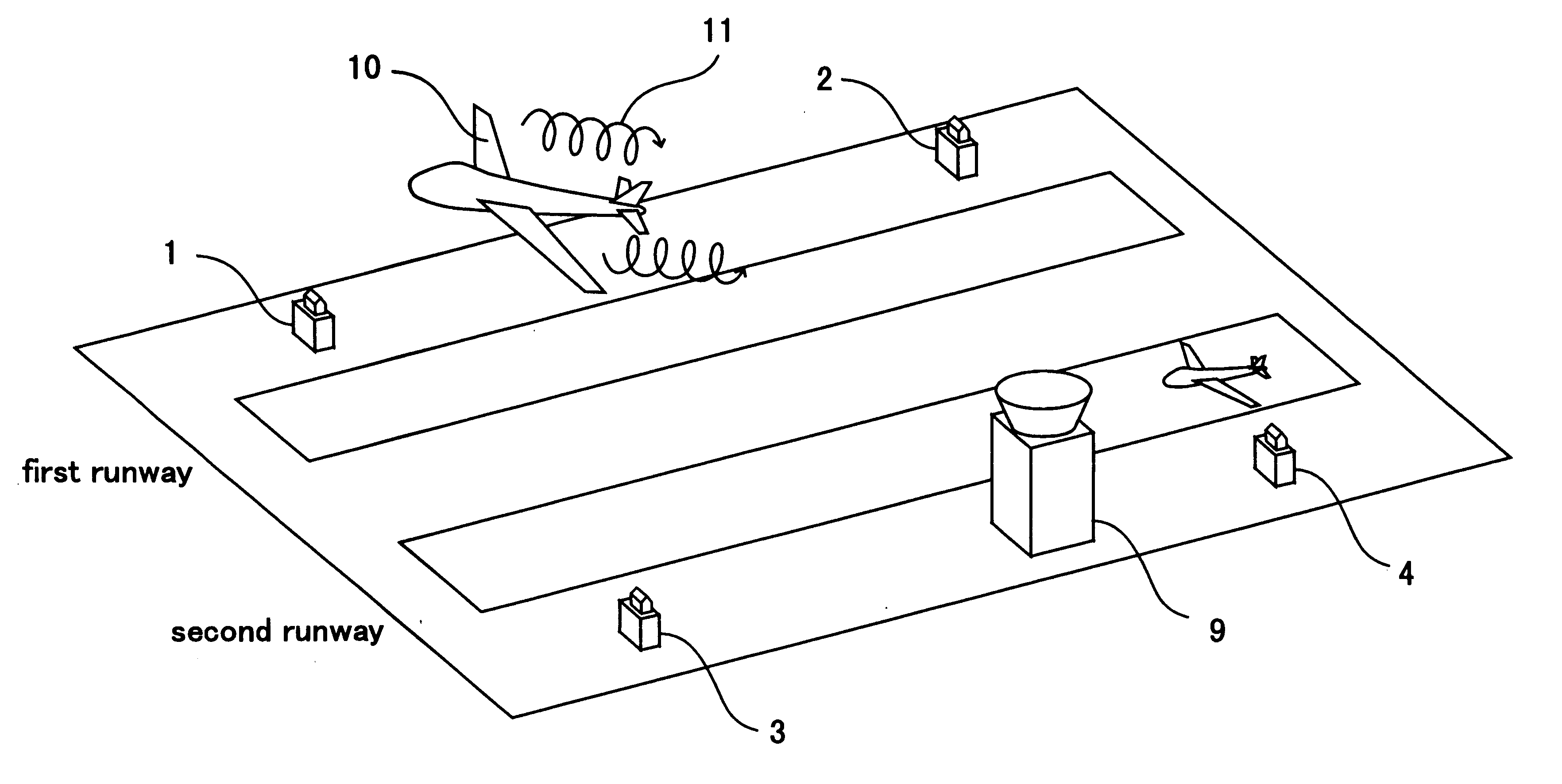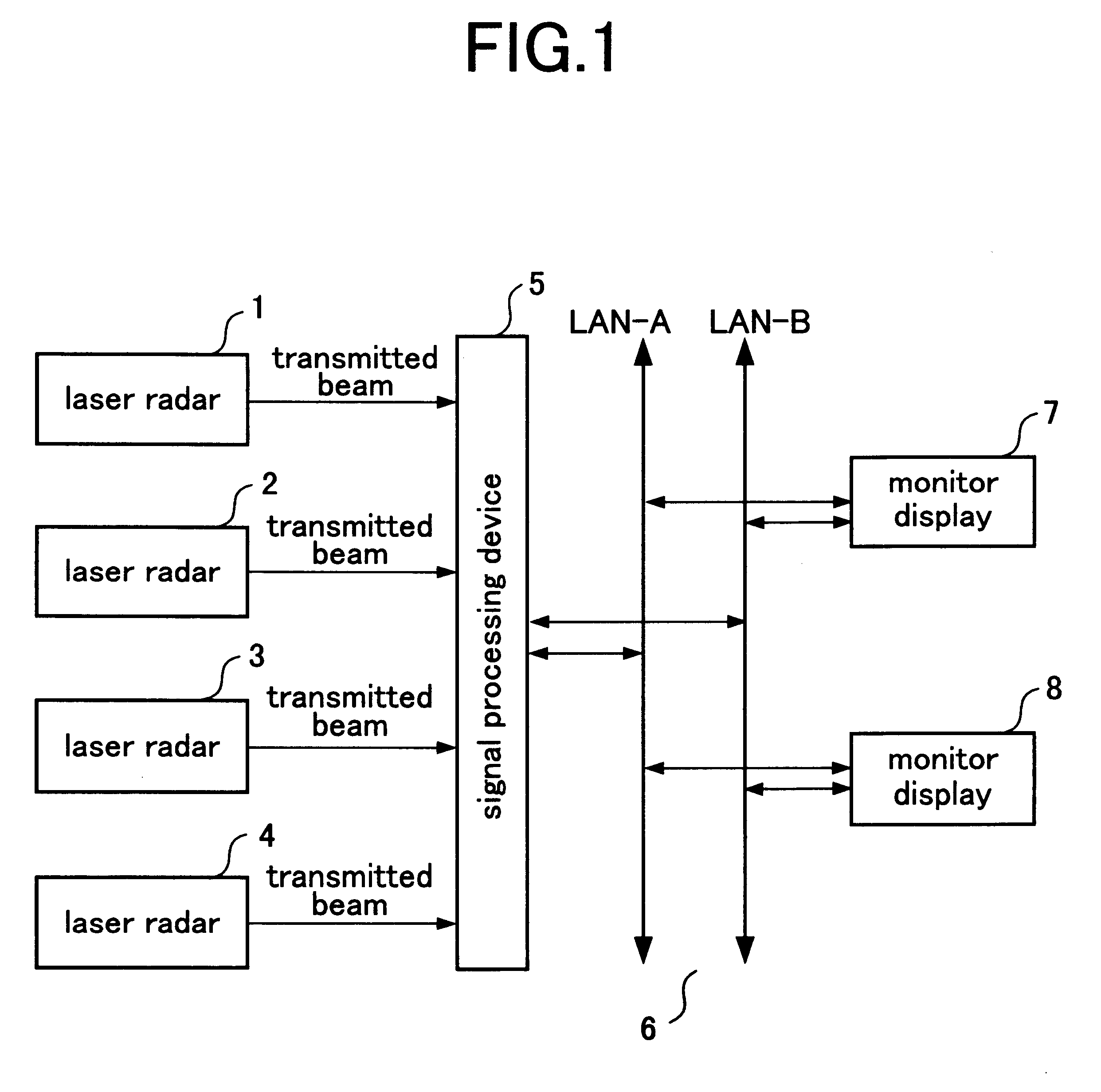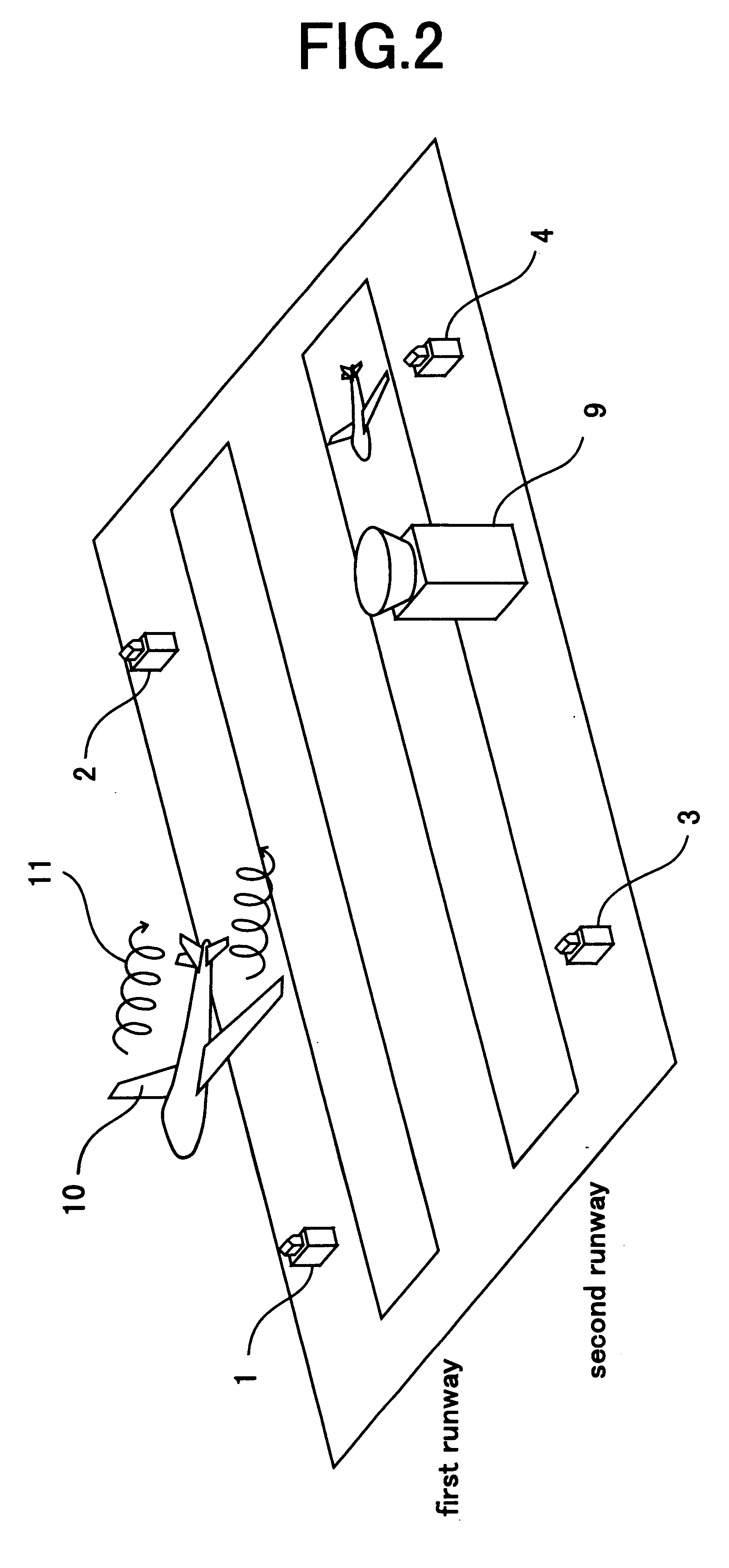Wake turbulence detecting system
a turbulence detection and wake technology, applied in the direction of landing aids, instruments, using reradiation, etc., can solve the problems of short life, deterioration of controllability, and inability to afford highly trustworthy aircraft traffic control
- Summary
- Abstract
- Description
- Claims
- Application Information
AI Technical Summary
Problems solved by technology
Method used
Image
Examples
first embodiment
FIG. 1 is a block diagram which shows constitution of a wake turbulence detecting system related to the first embodiment of the present invention. In FIG. 1, reference number 1 denotes a first laser radar which is arranged in the vicinity of the first runway for emitting laser beam and receiving the reflected laser beam reflected back by aerosol in the atmosphere. Reference number 2 denotes a second laser radar arranged at a position differing from that of the first laser radar in the vicinity of the first runway same as the first laser radar. Reference number 3 denotes a third laser radar arranged in the vicinity of the second runway. Reference number 4 denotes a fourth laser radar arranged at a position differing from that of the third laser radar in the vicinities of the second runway same as the third laser radar. Reference number 5 denotes a signal processing device detecting the wake turbulence from the reflected laser beam output by each laser radar 1, 2, 3 and 4 and displayi...
second embodiment
The wake turbulence detecting system related to the first embodiment detects the wake turbulence by means of both first laser radar 1 and second laser radar 2. The wake turbulence detecting system detecting wake turbulence by means of two laser radar, has an advantage that even though the aircraft flies into the blind spot of one laser radar, the other laser radar catches the aircraft making it possible to detect wake turbulence. However, keeping the blind area of each laser radar in memory beforehand, radar that detects wake turbulence may be switched according to the position of an aircraft.
FIG. 8 is a block diagram which shows constitution of a wake turbulence detecting system related to the second embodiment. In FIG. 8, reference number 23 denotes laser radar selecting part which selects either first laser radar 1 or second laser radar 2 for detecting the wake turbulence. Reference number 24 denotes memory means, in which is stored blind spots of first laser radar 1 and second l...
PUM
| Property | Measurement | Unit |
|---|---|---|
| diameter | aaaaa | aaaaa |
| velocity | aaaaa | aaaaa |
| area | aaaaa | aaaaa |
Abstract
Description
Claims
Application Information
 Login to View More
Login to View More - R&D
- Intellectual Property
- Life Sciences
- Materials
- Tech Scout
- Unparalleled Data Quality
- Higher Quality Content
- 60% Fewer Hallucinations
Browse by: Latest US Patents, China's latest patents, Technical Efficacy Thesaurus, Application Domain, Technology Topic, Popular Technical Reports.
© 2025 PatSnap. All rights reserved.Legal|Privacy policy|Modern Slavery Act Transparency Statement|Sitemap|About US| Contact US: help@patsnap.com



